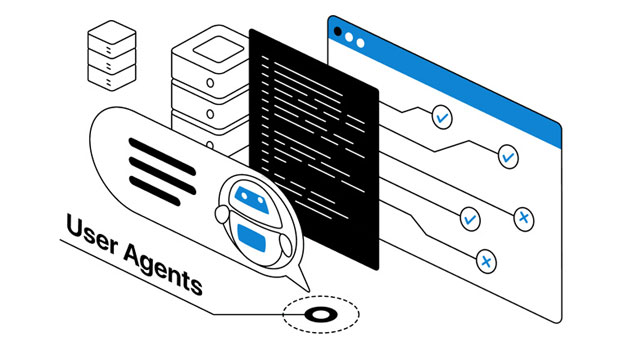When it comes to online privacy and security, proxies have become a go-to tool for many users. In recent years, a particular solution called PYPROXY has caught the attention of those seeking to bypass restrictions and enhance their browsing experience. But the question arises: can Pyproxy unblock proxy work effectively on mobile devices? This article explores this query in depth, offering a clear understanding of how Pyproxy functions, its effectiveness on mobile platforms, and practical considerations for users who wish to leverage it on smartphones and tablets. Introduction to Pyproxy and Its FunctionalityPyproxy is a tool designed to help users bypass various types of online restrictions, such as geographic censorship, network firewalls, and access controls. By using proxies, it can disguise the user's real IP address and provide access to restricted content. While Pyproxy is primarily utilized on desktop systems, its compatibility and functionality on mobile devices have garnered significant interest.In the mobile world, where restrictions and censorship are common, users increasingly rely on tools like Pyproxy to access blocked websites and services. However, there are several technical and practical factors that influence whether Pyproxy can work seamlessly on mobile devices.How Pyproxy Works: An OverviewBefore diving into its mobile compatibility, it's essential to understand how Pyproxy functions. Pyproxy essentially works by acting as an intermediary between the user and the web services they want to access. When a user requests a webpage, the request is sent through the proxy server, which fetches the content on behalf of the user. This ensures that the user's IP address is masked, and they can access restricted content.Pyproxy is typically deployed using Python, a popular programming language, making it highly customizable and flexible. The flexibility of Pyproxy allows it to be adapted for different environments, including mobile platforms. However, just because something is adaptable does not necessarily mean it will function seamlessly across all devices.Mobile Device LimitationsMobile devices, such as smartphones and tablets, come with unique limitations that can affect the performance of Pyproxy or any proxy tool. Some of the most significant challenges include:1. Network Configurations: Mobile networks often have different configurations compared to desktop networks. These networks can sometimes block or limit proxy traffic, especially if the network is set up with specific security measures. Mobile data connections are less stable than Wi-Fi, making it more difficult for proxy tools like Pyproxy to maintain a stable connection.2. Operating System Differences: Mobile operating systems, such as iOS and Android, have different networking protocols and restrictions. While Android devices provide greater freedom for installing and configuring proxy tools, iOS devices are more restrictive, limiting the direct installation of such tools. Pyproxy, in its native form, might face compatibility issues with iOS unless certain adjustments are made.3. App Usage: Unlike desktop environments, which allow full control over network settings, mobile apps generally do not provide users with the same level of freedom. Many apps are designed to block proxy traffic in order to prevent misuse and protect against fraud or malicious activity. This could impact the overall effectiveness of Pyproxy when trying to access specific apps or websites on mobile.Setting Up Pyproxy on Mobile DevicesDespite these limitations, it is possible to use Pyproxy on mobile devices with some workarounds and configurations. Below is a step-by-step guide on how to set up Pyproxy on a mobile device, primarily focusing on Android since it offers more flexibility than iOS.1. Install Python on Android: The first step is to install Python on your Android device. There are several apps available that allow you to run Python scripts on Android, such as QPython or Pydroid. These apps provide an environment where you can execute Python scripts directly from your mobile device.2. Configure Pyproxy: Once Python is installed, you can download or transfer the Pyproxy script to your Android device. Afterward, configure the script to work with your chosen proxy settings. You may need to enter proxy server details, including the address, port, and authentication credentials, depending on your proxy provider.3. Set Up VPN or Proxy Settings: To ensure that all traffic on your mobile device routes through the proxy, you will need to configure the network settings of your Android device. This can be done by entering the proxy details in the device's Wi-Fi settings or by using a VPN service that supports custom proxy configurations.4. Testing and Troubleshooting: After setting up the proxy, test its functionality by trying to access geo-blocked or restricted content. If there are issues, you may need to tweak the configuration, such as changing the proxy port or using a different server location.For iOS users, the process is a bit more complicated. iOS does not natively support running Python scripts, so using Pyproxy requires additional steps, such as jailbreaking the device or using remote access to a server where Pyproxy is installed.Effectiveness of Pyproxy on Mobile DevicesThe effectiveness of Pyproxy on mobile devices largely depends on the type of network you are connected to and the mobile operating system in use. For users on Android, Pyproxy can work quite effectively, especially when configured properly. However, its performance might not be as stable as on a desktop, particularly in terms of maintaining a constant connection or bypassing more advanced censorship systems.On iOS, the situation is more challenging. Apple's strict control over app installations and network configurations means that Pyproxy may not function as seamlessly on iOS devices without significant customization or technical expertise. Additionally, since iOS does not offer as much flexibility in network settings, using proxy tools on this platform requires more effort, and the results may be inconsistent.Security ConsiderationsWhile using Pyproxy can provide a level of anonymity and help bypass restrictions, users should be mindful of the security implications. Proxies, especially free ones, can expose users to risks, including data theft, malware, and identity breaches. It's essential to ensure that the proxy service being used is reputable and secure. Furthermore, using a VPN in combination with Pyproxy can add an extra layer of protection by encrypting all internet traffic.In conclusion, while Pyproxy can indeed be used to unblock proxies on mobile devices, its functionality may vary depending on the operating system and network environment. Android users have more flexibility and control over their devices, making it easier to set up and use Pyproxy. iOS users, on the other hand, face more challenges due to the platform's restrictions and lack of native support for Python scripting. Regardless of the platform, users should also consider the potential security risks of using proxy services and take the necessary steps to protect their online privacy.For those looking for a seamless experience, it may be worth exploring alternative proxy tools designed specifically for mobile devices. However, with the right configuration, Pyproxy can be a powerful tool for bypassing online restrictions, even on mobile platforms.
Oct 21, 2025


































































